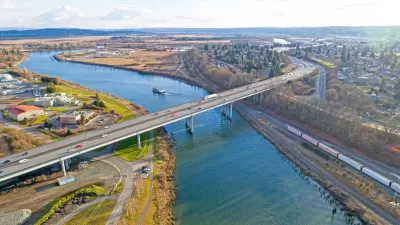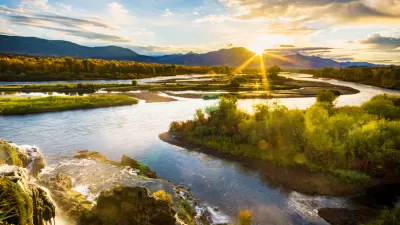Pollution is threatening the structural integrity of the Taj Mahal, prompting local officials to scramble for ways to preserve the historic site.
The nearby Yamuna River is plagued by pollution problems, and the soil beneath the Taj Mahal could be in danger of erosion.
"The Indian press has been filled with reports that the latest government efforts to control pollution around the Taj are failing and that the gorgeous white marble is deteriorating-a possible casualty of India's booming population, rapid economic expansion and lax environmental regulations. Some local preservationists, echoing the concerns of R. Nath, an Indian historian who has written extensively about the Taj, warn that the edifice is in danger of sinking or even collapsing toward the river. They also complain that the Archaeological Survey of India (ASI) has done slipshod repair work and call for fresh assessments of the structure's foundations.
The criticisms are a measure of how important the complex is to India and the world, as a symbol of historical and cultural glory, and as an architectural marvel. It was constructed of brick covered with marble and sandstone, with elaborate inlays of precious and semiprecious stones. The designers and builders, in their unerring sense of form and symmetry, infused the entire 42-acre complex of buildings, gates, walls and gardens with unearthly grace. "It combines the great rationality of its design with an appeal to the senses," says Ebba Koch, author of The Complete Taj Mahal, a careful study of the monument published in 2006. 'It was created by fusing so many architectural traditions-Central Asian, Indian, Hindu and Islamic, Persian and European-it has universal appeal and can speak to the whole world.'"
FULL STORY: How to Save the Taj Mahal?

Alabama: Trump Terminates Settlements for Black Communities Harmed By Raw Sewage
Trump deemed the landmark civil rights agreement “illegal DEI and environmental justice policy.”

Planetizen Federal Action Tracker
A weekly monitor of how Trump’s orders and actions are impacting planners and planning in America.

The 120 Year Old Tiny Home Villages That Sheltered San Francisco’s Earthquake Refugees
More than a century ago, San Francisco mobilized to house thousands of residents displaced by the 1906 earthquake. Could their strategy offer a model for the present?

In Both Crashes and Crime, Public Transportation is Far Safer than Driving
Contrary to popular assumptions, public transportation has far lower crash and crime rates than automobile travel. For safer communities, improve and encourage transit travel.

Report: Zoning Reforms Should Complement Nashville’s Ambitious Transit Plan
Without reform, restrictive zoning codes will limit the impact of the city’s planned transit expansion and could exclude some of the residents who depend on transit the most.

Judge Orders Release of Frozen IRA, IIJA Funding
The decision is a victory for environmental groups who charged that freezing funds for critical infrastructure and disaster response programs caused “real and irreparable harm” to communities.
Urban Design for Planners 1: Software Tools
This six-course series explores essential urban design concepts using open source software and equips planners with the tools they need to participate fully in the urban design process.
Planning for Universal Design
Learn the tools for implementing Universal Design in planning regulations.
Clanton & Associates, Inc.
Jessamine County Fiscal Court
Institute for Housing and Urban Development Studies (IHS)
City of Grandview
Harvard GSD Executive Education
Toledo-Lucas County Plan Commissions
Salt Lake City
NYU Wagner Graduate School of Public Service





























